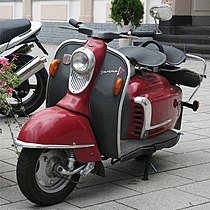 | |
| NSU | |
| Industry | Automotive |
| Predecessor |
D-Rad
|
| Founded | 1873 |
| Founder | Christian Schmidt |
| Defunct | 1969 1977 |
| Fate | Acquired by Volkswagen, merged with Auto Union to create Audi, production of high-end Audis |
| Successor |
Audi
|
| Headquarters | , Germany |
| Products | Knitting machines, automobiles, motorcycles, mopeds and scooters |
NSU Motorenwerke AG, or NSU, was a German manufacturer of automobiles, motorcycles and pedal cycles, founded in 1873. Acquired by Volkswagen Group in 1969, VW merged NSU with Auto Union, creating Audi NSU Auto Union AG, ultimately Audi. The name NSU originated as an abbreviation of " Neckarsulm", the city where NSU was located. [1]
History



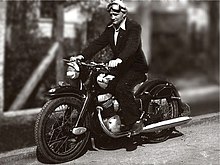
Origin
NSU originated as the "Mechanische Werkstätte zur Herstellung von Strickmaschinen", [2] a knitting machine manufacturer established in 1873 by Christian Schmidt, a technically astute entrepreneur, in the town of Riedlingen on the Danube. [3] The business relocated in 1880 to Neckarsulm. [3] There followed a period of rapid growth and in 1886, the company began to produce bicycles, the first of them a 'high wheeler' or ' Penny-farthing' branded as the "Germania". [4] By 1892, bicycle manufacturing had completely replaced knitting machine production. At about this time, the name NSU appeared as a brand name.
The first NSU motorcycle appeared in 1901, [5] followed by the first NSU car in 1905. During World War I the company produced motorcycles and trucks for the German Army.
In 1932, under pressure from their bank ( Dresdner Bank), NSU recognised the failure of their attempt to break into volume automobile production, and their recently built car factory in Heilbronn was sold to Fiat, [6] who used the plant to assemble Fiat models for the German market. From 1957, NSU-Fiat cars assumed the brand name Neckar.
During World War II NSU produced the Kettenkrad, the NSU HK101, a half-tracked motorcycle with the engine of the Opel Olympia. They also made the 251 OSL motorcycle during the war. [7]
After WW II
In December 1946, Das Auto reported the company had resumed the manufacture of bicycles and motor-bicycles at Neckarsulm. [8] For Germany, this was a time of new beginnings, and in July 1946, a new board was appointed, headed by General Director Walter Egon Niegtsch, who earlier in his career had spent 17 years with Opel. [8]
NSU motorbike production restarted, in a completely destroyed plant, with prewar designs like the Quick, OSL, and Konsul motorbikes; furthermore, the HK101 continued to be sold by NSU as an all-terrain vehicle in a civilian version. The first postwar model was the NSU Fox in 1949, available in 2-stroke and 4-stroke versions. In 1953, the NSU Max followed, a 250 cc motorbike with a unique overhead camdrive driven by reciprocating rods. All these new models had an innovative monocoque frame of pressed steel and a central rear suspension unit. Albert Roder, the chief engineer behind the success story, made it possible that in 1955, NSU became the biggest motorcycle producer in the world. NSU also holds four world records for speed: 1951, 1953, 1954, and 1955. In August 1956, Wilhelm Herz at the Bonneville Salt Flats, Utah, became the first man to ride a motorcycle faster than 200 mph (322 km/h).
In 1957, NSU re-entered the car market with the new Prinz (Prince), a small car with a doubled NSU Max engine, an air-cooled two-cylinder engine of 600 cc (37 cu in) and 20 hp (15 kW). Motorbike production continued until 1968. NSU's last production motorcycle was the Quick 50. [9] [10]
In 1964, NSU offered the world's first Wankel engined car: the Wankelspider. In development of the project, NSU built the Sport Prinz, with a 129 hp (96 kW) 995 cc (60.7 cu in) 2-rotor. [11] In the same year Prinz 1000 and derivatives like the TT and TT/S followed. The Typ 110 (later called 1200SC) was launched in 1965 as a family car with a more spacious body design. The last NSU cars with a conventional four-stroke engine had the air-cooled OHC four-cylinder engine in common. The car was marketed in the U.K. as "NSU TYP 110", and Karobes, a major supplier of car accessories, provided a head rest specially for this car: "A new one which can be fitted without a screw, and may be adjusted forwards and backwards." [12]
Also in 1964, NSU partnered with Citroën to develop the Wankel engine via the Comotor subsidiary, which resulted in the abortive 1973 Citroën GS Birotor production car.
In 1967, the four-door NSU Ro 80, with a 115 hp (86 kW) version of the same 2-rotor, [11] was presented to the public. Weighing 1,200 kg (2,600 lb), it had a Cd of 0.36, disc brakes, independent suspension, and front wheel drive by Fichtel & Sachs Saxomatic three-speed transmission. [11] It soon gained several design awards such as "car of the year 1967", while drivers liked its performance. [11] Virtually all the world's major motor manufacturers purchased licenses from NSU to develop and produce the rotary-piston engine, with the notable exception of BMW. [13]
Despite its public acclaim, sales of the Ro 80 were disappointing. The transmission drew complaints and the engine suffered numerous failures even at low mileage. [11] Competitor automakers, apart from Mazda, held back from taking a lead in developing and marketing the Wankel technology, and anticipated income associated with those royalty deals failed to materialize.
Volkswagen Group takeover
The development of the rotary engine was very cost-intensive for the small company. Problems with the apex seals of the engine rotor significantly damaged the brand's reputation amongst consumers. In 1969, the company was taken over by Volkswagenwerk AG, which merged NSU with Auto Union, the owners of the Audi brand which Volkswagen had acquired five years earlier. The new company was called Audi NSU Auto Union AG and represented the effective end of the NSU marque with all future production to bear the Audi badge (although retaining the four interlocking circles of Auto Union). The management of the new combine was initially based at the Neckarsulm plant, however when the small rear-engined NSU models (Prinz 4, 1000, 1200) were phased out in 1973, the Ro 80 was the last car still in production carrying the NSU badge. Audi never made use of the brand name NSU again after April 1977, when the last Ro 80 was sold. [11] In 1985, the company name was shortened to Audi AG and management moved back to Audi's headquarters in Ingolstadt.
Even as production of the Ro 80 continued in the Neckarsulm plant, production of larger Audi models like 100 and 200 was started. The Porsche 924 and later Porsche 944 were also assembled at Neckarsulm. Those models were joint venture projects of Porsche and VW, but Porsche did not have the internal capacity to build the 924 and 944. Currently, Neckarsulm is the production plant for Audi's topline vehicles like A6, A8, and R8. It is also the home of the "Aluminium- und Leichtbauzentrum" where Audi's aluminium-made space frame bodies are designed and engineered.
NSU is primarily remembered today as the first licensee and one of only four automobile companies to produce cars for sale with rotary-piston " Wankel engines". NSU invented the principle of the modern Wankel engine with an inner rotor. The NSU Ro 80 was the second mass-produced two-rotor Wankel-powered vehicle after the Mazda Cosmo. In 1967, NSU and Citroën set up a common company, Comotor, to build engines for Citroën and other car makers. Norton made motorcycles using Wankel engines. AvtoVaz (Lada) manufactured single and twin rotored Wankel powered cars in the early 1980s. Only Mazda has continued developing the Wankel engine and made several more cars with the Wankel engine. NSU developed their last car in a recognisably conventional layout, (front engine front wheel drive, water cooled) - this was the NSU K70, Volkswagen adopted this as their first water cooled front-engined car the VW K70. The first VW Golf cars used the NSU K70 engine which was almost identical. Subsequent VW models shared no lineage with NSU models, being descended from Auto-Union designs.
Lawn mower engine
In the early 1970s, NSU manufactured a vertical-crankshaft small engine for use as a lawn mower power unit. [14]
NSU Museum
A museum in Neckarsulm, the Deutsches Zweirad- und NSU-Museum, has many of NSU's products on display.
Notable riders
Mike Hailwood raced in 1958 on Ducati, NSU, MV Agusta, Norton, Triumph, Paton and in 1958 was 4th in the world championship 250cc (NSU) 5. John Surtees [15] entered in the 1955 season. That year, he gained his first podiums on a Norton in 350cc in Germany and Ulster. He also won the round in 250cc while riding the best lap in the race for his only appearance at the handlebars of a NSU. John Surtees remains the only champion of the world in both motorcycle racing and Formula 1.
pilots:
- Hermann Paul Müller (born in Bielefeld, 21 November 1909 – died in Ingolstadt, 30 December 1975) was a German sidecar, motorcycle, and race car driver.
- Hans Baltisberger (born 16 September 1924 – 26 August 1956 ) was a German professional Grand Prix motorcycle road racer.
- Florian Camathias (23 March 1924 – 10 October 1965) was a Swiss professional Grand Prix motorcycle and sidecar racer
- Louis Meznarie (14 January 1930) is a former French engine preparation expert and a team owner entrant to 24 Hours of Le Mans.
- Rupert Hollaus (4 September 1931 in Traisen – 11 September 1954) was an Austrian Grand Prix motorcycle road racer who competed for the NSU factory racing team.
- Rudi Thalhammer (born 1 February 1935) was a former Grand Prix motorcycle road racer from Austria.
- Georg Braun (born 2 September 1918 in Hechingen, Province of Hohenzollern) was a German Grand Prix motorcycle road racer.
- Helmut Hallmeier (1933 – 26 June 1976) was a former Grand Prix motorcycle road racer from the Germany.
- Geoff Duke ( St Helens, Lancashire, 29 March 1923 – Man, 1 May 2015) was a motorcycle racer from England.
- Bill Lomas (1928–2007) was an English former Grand Prix motorcycle road racer.
- Reg Armstrong (1 September 1928 – November 1979) was an Irish professional Grand Prix motorcycle road racer.
- Umberto Masetti (4 May 1926 – 28 May 2006) was an Italian two-time World Champion Grand Prix motorcycle road racer.
- Sammy Miller, MBE (born 11 November 1933 in Belfast, Northern Ireland) is a championship winning motorcycle racer, in both road racing and trials. He was awarded an MBE in the 2009 New Year Honours
- Tommy Robb, (born 14 October 1934) is a former Grand Prix motorcycle road racer from Northern Ireland.
- Bob Brown, (9 May 1930 in Sydney – 23 July 1960 at Solituderennen) was an Australian professional Grand Prix motorcycle road racer.
- Arthur Wheeler, (5 August 1916 – 16 June 2001) was an English professional Grand Prix motorcycle road racer.
- Horst Kassner was a former Grand Prix motorcycle road racer from Germany.
NSU cars
NSU- (and NSU-Pipe-) Cars 1905–1918
The first NSU cars were the single cylinder 3-wheeled Sulmobil, first produced in 1905. At the same time NSU produced the NSU-Pipe 34 PS and NSU-Pipe 50 PS under licence from the Belgian firm of Pipe. Two further Pipe models were to follow, and a range of NSU-specific 3- and 4-wheeled models.
NSU-Cars (licensed from Pipe) 1905–1910 Source: [16]: 320–321
| Type | Motor (all FourStroke) | Engine size in cm3 | max. Power in PS | At engine speed (rpm) | Years | Picture |
|---|---|---|---|---|---|---|
| NSU-Pipe 34 PS | 4-Cylinder | 3768 | 34 | – | 1905–1906 | – |
| NSU-Pipe 50 PS | 4-Cylinder | 8290 | 50 | – | 1905–1906 | – |
| NSU-Pipe 15/24 PS | 4-Cylinder | 3768 | 24 | 1650 | 1906–1910 | – |
| NSU-Pipe 25/40 PS | 6-Cylinder | 6494 | 40 | 1100 | 1908–1909 | – |
NSU-Cars 1905–1918 Source: [16]: 322–338
| Type | Motor (all FourStroke) | Engine size in cm3 | max. Power in PS | At engine speed (rpm) | Years | Picture |
|---|---|---|---|---|---|---|
| NSU Sulmobil Typ II/IV | 1-Cylinder | 451 | 3,5 | – | 1905–1909 | – |
| NSU Sulmobil Typ III | 2-Cylinder | 795 | 5,5 | – | 1909 | – |
| NSU 6/8 PS | 1-Cylinder | 451 | 8 | – | 1906 | – |
| NSU 6/10 PS | 4-Cylinder | 1420 | 12 | 1650 | 1906–1907 | – [17] |
| NSU 6/12 PS | 4-Cylinder | 1540 | 13 | 1500 | 1907–1909 | – |
| NSU 6/14 PS | 4-Cylinder | 1560 | 14 | 1650 | 1910–1911 | – |
| NSU 6/18 PS | 4-Cylinder | 1560 | 18 | 1800 | 1911–1914 | – |
| NSU 10/20 PS | 4-Cylinder | 2608 | 20 | 1400 | 1907–1910 | – [18] |
| NSU 10/22 PS | 4-Cylinder | 2608 | 22 | 1400 | 1910–1911 | – |
| NSU 10/30 PS | 4-Cylinder | 2608 | 30 | 1600 | 1911–1916 | – [19] |
| NSU 5/10 PS | 2-Cylinder | 1105 | 10 | 1400 | 1910 | – |
| NSU 5/11 PS | 2-Cylinder | 1105 | 11 | 1400 | 1911–1913 | – |
| NSU 5/10 PS | 4-Cylinder | 1132 | 10 | 1600 | 1910–1911 | – |
| NSU 5/11 PS | 4-Cylinder | 1132 | 11 | 1600 | 1911–1913 | – |
| NSU 8/15 PS | 4-Cylinder | 1750 | 16 | 1500 | 1907–1910 | – |
| NSU 9/18 PS | 4-Cylinder | 2208 | 18 | 1400 | 1910–1911 | – |
| NSU 9/22 PS | 4-Cylinder | 2208 | 22 | 1400 | 1911–1912 | – |
| NSU 9/27 PS | 4-Cylinder | 2208 | 27 | 1400 | 1911–1912 | – |
| NSU 8/24 PS | 4-Cylinder | 2110 | 24 | 1800 | 1911–1918 | – [20] |
| NSU 13/40 PS | 4-Cylinder | 3397–3768 | 40 | 1800 | 1911–1912 | – |
| NSU 13/35 PS | 4-Cylinder | 3397 | 35–40 | 1700 | 1912–1914 | – |
| NSU 5/12 PS | 4-Cylinder | 1132 | 12 | 1600 | 1913–1914 | – |
| NSU 5/15 PS | 4-Cylinder | 1232 | 15 | 1800 | 1914–1918 | - [21] |
| NSU 1¼-Tonner | 4-Cylinder | 3397 | 35 | 1800 | 1914–1918 | – |
| NSU 2½-Tonner | 4-Cylinder | 3380 | 42 | 1700 | 1914–1926 | – [22] |
NSU Cars 1919–1931
Source: [16]: 332–344
| Type | Motor (all FourStroke) | Engine size in cm3 | max. Power in PS | At engine speed (rpm) | Years | Picture |
|---|---|---|---|---|---|---|
| NSU 8/24 PS | 4-Cylinder | 2110 | 30 | 2100 | 1921–1925 | – |
| NSU 14/40 PS | 4-Cylinder | 3606 | 54 | 2000 | 1921–1925 | – |
| NSU 5/15 PS | 4-Cylinder | 1231 | 21 | 2100 | 1921–1925 | – |
| NSU 8/32 PS Lieferwagen (Delivery truck) | 4-Cylinder | 2088 | 32 | 2200 | 1925–1927 | – |
| NSU 5/25 PS | 4-Cylinder | 1307 | 25 | 2900 | 1925–1928 | – |
| NSU 8/40 PS | 4-Cylinder | 2088 | 40 | 2800 | 1925–1927 | – |
| NSU 5/15 PS (Kompressor-Rennwagen) (Supercharger race car) | 4-Cylinder | 1232 | 40–50 | 4000 | 1923–1925 | – |
| NSU 6/60 PS (Kompressor-Rennwagen) (Supercharger race car) | 6-Cylinder | 1482 | 60 | 3800 | 1925–1926 | – |
| NSU 6/30 PS | 6-Cylinder | 1567 | 30 | 3000 | 1928 | – |
| NSU 7/34 PS | 6-Cylinder | 1781 | 34 | 3200 | 1928–1931 | – |
NSU Car Models Post War
NSU produced the following postwar cars:
- Prinz I, II & III I, II, 30 and III (1957–1962)
- Sport Prinz (1959–1967)
- Prinz 4, 4 L (240 cu in) (1961–1972)
- Prinz 1000, NSU 1000 (1964–1972)
- NSU 1000 TT, NSU TT, NSU TTS (1965–1972)
- NSU Typ 110 (1965–1967)
- NSU 1200 (1967–1972)
- NSU Spider (1964–1967)
- NSU Ro 80 (1967–1977)
- NSU K70, produced after VW/Audi takeover as the Volkswagen K70 (1970–1975)
Licence-built models made abroad

The NSU Prinz was also built in Yugoslavia (by PRETIS), Argentina (by Autoar) and Egypt, under licence.
In Uruguay, the Prinz 4 was built by Nordex S.A., and a new model, the P6, combined the engine and mechanics of the NSU model with a separate body completely redesigned by Carlos Sotomayor. From 1970, the P10 was built as the successor model to the NSU P6. This had the larger engine of the NSU Prince 1000 and a 21 cm extended wheelbase.
NSU motorcycles and scooters
-
NSU 3 PS (2.96 hp; 2.21 kW) 1911
-
NSU 1913
-
NSU Fox (1952)
-
NSU Lux (1952)
-
NSU Rennfox G.P. 125 cc (7.6 cu in) O.H.C. TWIN (1954)
-
NSU Rennmax G.P. 250 cc (15 cu in) O.H.C. TWIN (1954)
-
NSU Superlux 250 cc (15 cu in) T/S SINGLE (1955)
-
NSU Sportmax G.P. 250 cc (15 cu in) O.H.C. SINGLE (1956)
-
Sidecar (Germany, 2002)
-
NSU 1000
-
NSU 500
-
NSU 2000
-
NSU Prima III scooter
-
1957 NSU Prima in Deutsches Zweirad- und NSU-Museum
The first "Neckarsulmer Motorrad" motorcycle was produced in 1901, using a Swiss 1+3⁄4 hp (1.8 PS; 1.3 kW) Zedel single-cylinder AIV (automatic inlet valve) motor with battery/coil ignition, clamped at the underside of a heavy-duty bicycle frame (of NSU manufacture), with the crankcase slightly below and in front of the pedal crank. Specialized racing motorcycles were campaigned from 1905 in events in Europe, the UK, and USA. In 1907, British manager Martin Geiger rode an NSU in the inaugural Isle of Man TT, placing fifth. [23] NSU had several successes in the Isle of Man TT races in the 1950s. In 1908, an NSU v-twin took part in the Ormonde-Daytona beach speed record races for cars and motorcycles, ridden by Eugene Gaestral, who returned with an improved machine the following year.
During the 1930s, and in the mid-1950s, NSU was the largest motorcycle producer of the world, in its peak year (1955) producing 350,000 machines. [24] NSU holds four world records for speed: 1951, 1953, 1954 and 1955. In 1956, NSU brought a team of six motorcycles of different engine capacities to Bonneville, Utah, to set World Land Speed Records. They had success in all categories, and most notably raised the absolute motorcycle speed record to 211 mph, with Wilhelm Herz piloting the Delphin III, a fully streamlined motorcycle with a 500cc supercharged DOHC twin-cylinder Rennsport engine. [25] This machine still exists, in the Audi Museum in Stuttgart, Germany.
The NSU Quickly was the most popular moped of its time.[ citation needed] It was produced between 1953 and 1966 in over 1,000,000 examples and still can be found today all over the world as more than 60% were exported.
NSU bicycles
Bicycle production began in 1900 and continued into the early 1960s. [26]
NSU military vehicles
NSU was the principal maker of the Kettenkrad halftracked motorcycle (1940–1949) The Sd.Kfz. 2 was designed and built by NSU Motorenwerke AG in Neckarsulm, Germany. Designed and patented in June 1939, it was used for the first time during the invasion of the Soviet Union Operation Barbarossa in 1941.

See also
References
Notes
- ^ "Die NSU-Firmengeschichte". Retrieved 1 January 2016.
- ^ "Die NSU-Firmengeschichte – zweirad-museum.de". www.zweirad-museum.de. Retrieved 5 April 2018.
- ^ a b Deutsche Autos, Band 4, 2001, p. 392.
- ^ "Technische website NSU motor – Hans Homburg – The production of the first NSU bicycle in 1886". www.nsu4.nl. Retrieved 5 April 2018.
- ^ Ric Anderson (21 August 2009). "1956 NSU Supermax". Motorcycle Classics (Premier Issue). Retrieved 24 August 2009.
-
^
Rudolf Augstein (proprietor & managing editor) (5 September 1956).
"Scheidung von Fiats Tochter". SPIEGEL-ONLINE. p. 39. Retrieved 18 May 2013.
{{ cite web}}:|author=has generic name ( help) - ^ Lepage, Jean-Denis G. G. (2007). "Cars and Motorcycles". German Military Vehicles of World War II: An Illustrated Guide to Cars, Trucks, Half-Tracks, Motorcycles, Amphibious Vehicles and Others. Jefferson, NC USA: McFarland. pp. 76–78. ISBN 978-0-7864-2898-4. LCCN 2007002638. Retrieved 23 May 2014.
- ^ a b "Aktuelles aus aller Welt". Auto Motor u. Sport. Heft 13 1996: Seite 23. December 1946.
- ^ "NSU Quickly Spares Gallery". Nsuquicklyspares.co.uk. Archived from the original on 2 May 2010. Retrieved 2 October 2010.
- ^ "Fredy's NSU Page:Quick 50". Nsu-cars.ch. Archived from the original on 7 July 2011. Retrieved 2 October 2010.
- ^ a b c d e f Lyons, Pete. "10 Best Ahead-of-Their-Time Machines", in Car and Driver, 1/88, p.78.
- ^ Dudley Noble: A New and Larger NSU Model. Financial Times London, 26 February 1966.
- ^ "In voller Blüte. In den sechziger Jahren...". Auto Motor u. Sport. Heft 13 1996: Seite 76–83. 14 June 1996.
- ^ "Now You Can 'Mow' with a Wankel!" Popular Science, July 1973 p. 18
- ^ "1955 NSU SPORTMAX – RS 251". www.classicdriver.com. Retrieved 5 April 2018.
- ^ a b c Schneider 2012, pp. as cited.
- ^ NSU 6/10 hp automobile, 1906 at audi.com Accessed 2 January 2017 Archived 3 January 2017 at the Wayback Machine
- ^ NSU 10/20 hp automobile, 1908 at audi.com Accessed 2 January 2017 Archived 3 January 2017 at the Wayback Machine
- ^ NSU 10/30 hp automobile, 1911 at audi.com Accessed 2 January 2017 Archived 3 January 2017 at the Wayback Machine
- ^ NSU 8/24 hp automobile, 1912 at audi.com Accessed 2 January 2017 Archived 3 January 2017 at the Wayback Machine
- ^ NSU 5/15 hp automobile, 1914 at audi.com Accessed 2 January 2017 Archived 3 January 2017 at the Wayback Machine
- ^ NSU 2.5 tonne truck, 1914 at audi.com Accessed 2 January 2017 Archived 21 December 2016 at the Wayback Machine
- ^ Williams, Greg (January–February 2013). "1954 NSU Max TT: The Odd Man Out". Motorcycle Classics. Retrieved 28 March 2013.
- ^ Schneider 2012.
- ^ "The Vintagent". thevintagent.blogspot.com. Retrieved 5 April 2018.
- ^ "1951 NSU Ladies Tourenrad Model 55". Online Vintage Bicycle Museum. 25 February 2010. Retrieved 5 June 2011.
Bibliography
- Arth, Klaus; Thum, Stephan (2001). NSU-Motorräder 1945-1964: Besser fahren auf NSU [NSU Motorcycles 1945-1964: Ride better on an NSU] (in German). Lemgo, Germany: Johann Kleine Vennekate. ISBN 3935517009.
- ————— (2008). NSU-Motorräder 1900-1945: greif zu - fahr NSU [NSU Motorcycles 1900-1945: Grab - Drive NSU] (in German). Lemgo, Germany: Johann Kleine Vennekate. ISBN 9783935517379.
- ————— (2015). NSU-Automobile: Typen, Technik, Modelle [NSU Automobiles: Types, Technology, Models]. Edition Audi Tradition (in German) (2nd ed.). Bielefeld, Germany: Delius Klasing. ISBN 9783667103499.
- ————— (2016). NSU: Alle Automobile von 1905 bis 1977 [NSU: All Automobiles from 1905 to 1977]. Typenkunde Classic (in German). Bielefeld, Germany: Delius Klasing. ISBN 9783667106902.
- Bruse, Volker (2006). NSU Prospekte 1873–1930: Fahrräder, Motorräder und Autos in Werbeanzeigen, Prospekten und Katalogen [NSU Brochures 1873–1930: Bicycles, Motorcycles and Cars in Advertisements, Brochures and Catalogues]. Lemgo, Germany: Johann Kleine Vennekate Verlag. ISBN 393551722X.
- ——————; Storz, Alexander Franco (2010). NSU Fotoalbum 1906–1977: Auto [NSU Photo Album 1906–1977: Car]. Motorrad - Auto series, no. 11 (in German). Lemgo, Germany: Johann Kleine Vennekate Verlag. ISBN 9783935517539.
- Geiling, Gerhard (2009). NSU: Fahrzeuge, Prototypen und Eigenbauten [NSU: Vehicles, Prototypes and Modifieds] (in German). Eschborn, Germany: Christian Rieck Verlag. ISBN 9783924043377.
- Hertweck, Carl (1954). Besser fahren auf NSU: Handbuch für Fahrer von NSU-Maschinen [Drive Better with an NSU: Manual for Drivers of NSU Machines] (in German) (3rd ed.). Bielefeld, Berlin, Stuttgart: Klasing. OCLC 73447929.
- Herz, Dieter; Reese, Karl (1987). Die NSU-Renngeschichte 1904-1956 [The NSU Racing History1904-1956] (2nd ed.). Stuttgart: Motorbuch Verlag. ISBN 3879437971.
- Mareike Hieber, Susanne Jauch, Ralph Plagmann, Gerhard Schwinghammer: 100 Jahre Automobilbau Neckarsulm. Hrsg.: AUDI AG – Kommunikation Standort Neckarsulm, date: 09/2006.
- Peter Kirchberg, Thomas Erdmann, Ralph Plagmann: Das Rad der Zeit – Die Geschichte der AUDI AG. 3. Auflage, date: 8/00, Hrsg.: AUDI AG Ingolstadt, Verlag Delius Klasing, Bielefeld 2000, ISBN 3-7688-1011-9.
- Lintelmann, Reinhard (1987). NSU Personenwagen: Eine Chronik [NSU Passenger Vehicles: A Chronicle]. Markenreihe series (in German). Brilon, Germany: Podszun Verlag. ISBN 3923448368.
- Oswald, Werner [in German] (2001). Deutsche Autos [German Cars] (in German). Vol. Band [Volume] 4: 1945–1990 Audi, BMW, Mercedes, Porsche und andere [and others]. Stuttgart: Motorbuch Verlag. ISBN 3613021315.
- Rossnagel, Heiko; Griffel, Lydia (2018). Besser fahren auf NSU: Karikaturen von Rudolf Griffel [Drive Better with an NSU: Caricatures by Rudolf Griffel]. Edition Audi Tradition (in German). Bielefeld, Germany: Delius Klasing. ISBN 9783667110671.
- Schneider, Peter (1988). NSU 1873-1984: Vom Hochrad zum Automobil – Geschichte, Typen und Modelle [NSU 1873-1984: From Penny-Farthing to Automobile – History, Types and Models] (in German) (2nd ed.). Stuttgart: Motorbuch Verlag. ISBN 3613010860.
- ———————— (2000). NSU im Bild: Motorräder seit 1900 [NSU in Pictures: Motorcycles since 1900] (in German). Stuttgart: Motorbuch Verlag. ISBN 3613020637.
- ———————— (2007). NSU: Motorräder 1900–1966 [NSU: Motorcycles 1900–1966]. Typenkompass series (in German). Stuttgart: Motorbuch Verlag. ISBN 9783613026285.
- ———————— (2008). NSU: Automobile 1905–1977 [NSU: Automobile 1905–1977]. Typenkompass series (in German). Stuttgart: Motorbuch Verlag. ISBN 9783613028678.
- ———————— (2011). NSU Autos und Motorräder 1900–1977 [NSU Cars and Motorcycles 1900–1977]. Schrader-Motor-Chronik series (in German) (2nd ed.). Stuttgart: Motorbuch Verlag. ISBN 9783613032774.
- ———————— (2012). Die NSU-Story [The NSU Story] (in German) (3rd ed.). Stuttgart: Motorbuch Verlag. ISBN 9783613033979.
- Steidl, Franz-Georg (2009). NSU Personenwagen: Eine Chronik [NSU Passenger Vehicles: A Chronicle]. Markenreihe series (in German). Brilon, Germany: Podszun Verlag. ISBN 9783861334422.
- Walker, Mick (2009). NSU: The Complete Story. Crowood AutoClassic Series. Ramsbury, Marlborough, UK: The Crowood Press. ISBN 9781847971487.
- Ward, Rod (2015). Auto Union: Audi, Horch, Wanderer, DKW, Framo (and NSU). Auto Review series, no. 112. Leeds, UK: Zeteo Publishing. OCLC 919299525.
External links
- NSU Motorenwerke
- Defunct motor vehicle manufacturers of Germany
- Defunct motorcycle manufacturers of Germany
- Cycle manufacturers of Germany
- Scooter manufacturers
- Moped manufacturers
- Vehicle manufacturing companies established in 1873
- Vehicle manufacturing companies disestablished in 1977
- 1977 disestablishments in Germany
- Audi
- Volkswagen Group
- Car manufacturers of Germany
- Companies based in Baden-Württemberg
- Companies based in Neckarsulm
- German companies established in 1873



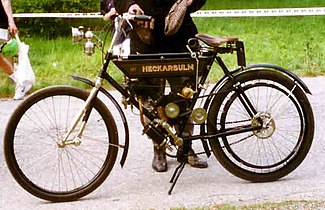
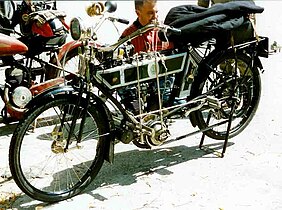
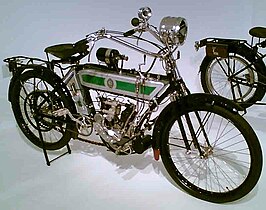

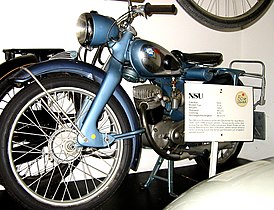

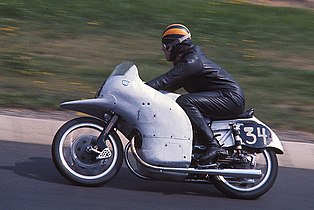









![NSU Prima [de] dashboard](https://upload.wikimedia.org/wikipedia/commons/thumb/2/2b/NSU_Prima_dashboard.jpg/375px-NSU_Prima_dashboard.jpg)
